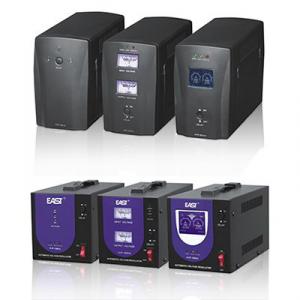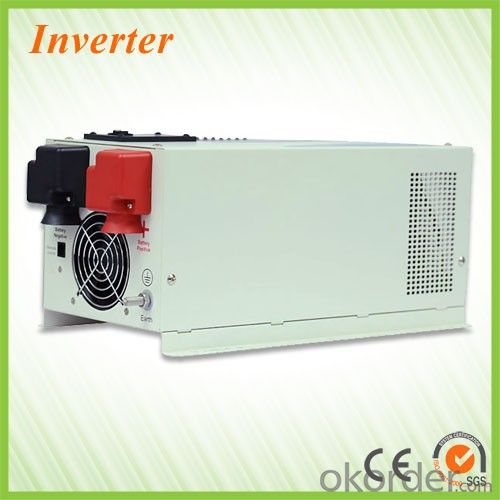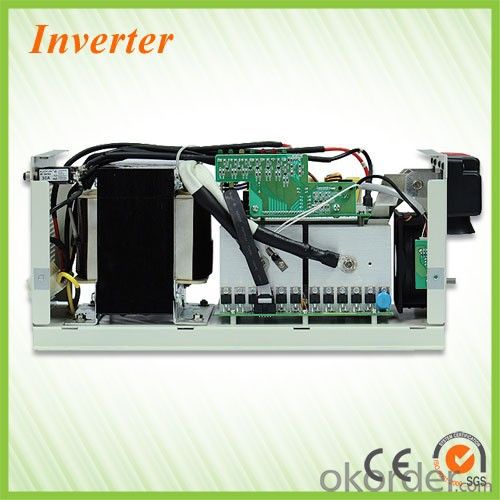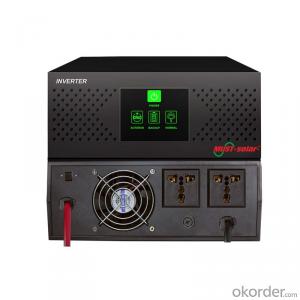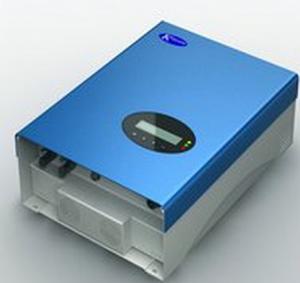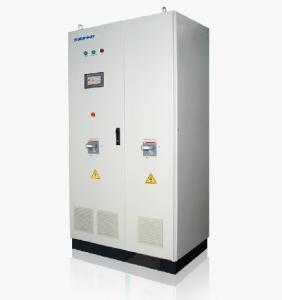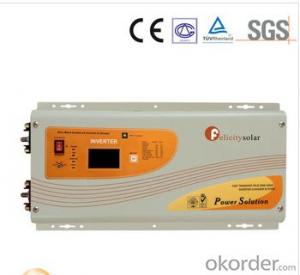100 Amp Solar Inverter AVR 500-5000VA 2024 Very Popular CE Excellent Quality Approved
- Loading Port:
- China main port
- Payment Terms:
- TT or LC
- Min Order Qty:
- 1 pc
- Supply Capability:
- 1000 pc/month
OKorder Service Pledge
OKorder Financial Service
You Might Also Like
| AVR 500-5000VA |
AVR series AC automatic regulators apply the advanced control technology with well qualified components It has the features of wide input voltage compatibility, high reliability, output voltage stabilizing, energy saving ect....; it has over voltage and low voltage protection and delayed output protection ect.. it could supply stabilized power to lights, TVs, air-conditioners, refrigerator, computers and duplicating machines and other household equipment in schools, offices, hotels, meeting rooms where the stabilized voltage is needed. |
● Classic series, EI transformer, relay type
● Input and output voltage LED/Meter/LCD display
● High temperature protection
● Circuit breaker protection
● Efficiency: 98%
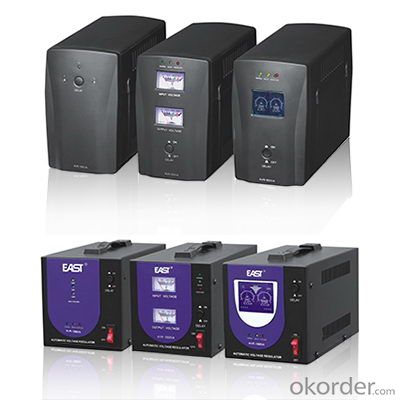
MODEL | 500VA | 800VA | 1000VA | 1500VA | 2000VA | 3000VA | 5000VA | |
Input | ||||||||
Phase | Single Phase+N+GND | |||||||
Voltage Range | 140Vac-270Vac (Option:100-270V) | |||||||
Output | ||||||||
Voltage Range | 200-240V(Empty Load) | |||||||
Frequency | 50/60Hz | |||||||
Over Voltage Protection | 250V±5V (Overvoltage indicator on, Output off ) | |||||||
Undervoltage Protection | 180V±5V (Overvoltage indicator on, Output off ) | |||||||
Others | ||||||||
Efficiency | ≥95% | |||||||
Display Mode | LED indicator light; Pointer voltmeter / LCD display (selectable) | |||||||
Input/Output Setting | Plug/ Socket | Terminal blocks | ||||||
Time-Delay | Short delay : <3 secs; long delay: 3mins | |||||||
Output Short Circuit Protection | Fuse / Breaker | |||||||
Waveform Distortion | No additional waveform distortion | |||||||
Insulation Resistance | >2MΩ | |||||||
Dielectric Strength | Low frequency sine voltage 1500V for 1 minute ( without phenomena of breakdown and flashover ) | |||||||
Ambient Temperature | -10℃~±40℃ | |||||||
Relative Humidity | ≤95% | |||||||
Working | Continuing Working | |||||||
Dimension(W×D×H) mm | Metal Case | 125×230×135 | 143×258×185 | 210x291x201 | 229x345x220 | |||
Plastic Case | 100×215×160 | —— | ||||||
Net Weight (kg) | Metal Case | 2.5 | 2.9 | 3.1 | 5.4 | 6.5 | 9.2 | 13.0 |
Plastic Case | 2.1 | 2.5 | 2.7 | —— | ||||
Packing Dimension (W×D×H) mm | Metal Case | 176×280×207 | 192×310×252 | 262x343x273 | 271x396x303 | |||
Plastic Case | 145×265×229 | —— | ||||||
Gross Weight(kg) | Metal Case | 2.8 | 3.2 | 3.4 | 5.6 | 6.7 | 9.6 | 13.55 |
Plastic Case | 2.4 | 2.8 | 3.0 | —— | ||||
Quantity/20ft | 2400PCS | 1600PCS | 900PCS | 730PCS | ||||
· Q. What is an UPS and What it is for ?
An uninterruptible power supply (UPS) is a device that allows your computer or telephone switch or critical equipement to keep running for at least a short time or longer time when the primary power source is lost. It also provides protection from power surges, spikes, brownouts, interference and other unwanted problems on the supported equipment.
· Q. How long the UPS to run when power goes?
This can take 3 paths.
1.You can pick a UPS that is rated for pretty much the full VA you need so it will be running at 100% of capability and will thus last 'n' minutes.
2.You can pick a UPS that is rated at a much higher VA value than you really need so, for example, is running at 50% of capability and will thus last for longer than the UPS from option 1.
3.You can use extra external battery packs to run for longer. If charging capability allows, the more and the bigger batteries you take with, the longer time UPS runs.
or using a generator after about 6 hours, it will be more cost-effective, with a short runtime UPS to bridge the generator start-up gap.
- Q: Can a solar inverter be used with a backup power supply (UPS)?
- Yes, a solar inverter can be used with a backup power supply (UPS). The UPS can provide power during periods of low solar generation or in case of a grid outage, ensuring a continuous power supply.
- Q: What is the role of a power backup system in a solar inverter?
- The role of a power backup system in a solar inverter is to provide a reliable source of energy during periods of low or no sunlight. This backup system, usually in the form of batteries, stores excess energy generated by the solar panels and allows it to be used when the solar energy production is insufficient or unavailable. It ensures a continuous and uninterrupted power supply, even during grid outages or at night, making the solar inverter system more reliable and versatile.
- Q: What is the role of a display interface in a solar inverter?
- The role of a display interface in a solar inverter is to provide real-time information and control options to the user. It allows them to monitor the performance of the solar inverter, such as power output, energy production, and system status. The display interface also provides access to various settings and configuration options, allowing the user to optimize the performance of the solar inverter based on their specific requirements.
- Q: Can a solar inverter be used with batteries?
- Yes, a solar inverter can be used with batteries. In fact, many solar energy systems incorporate batteries to store excess energy generated by the solar panels. The solar inverter converts the direct current (DC) from the solar panels into alternating current (AC) that can be used to power household appliances and charge the batteries. When solar energy production is low, the batteries can be used to provide a continuous power supply.
- Q: Can a solar inverter be integrated with smart home systems?
- Yes, a solar inverter can be integrated with smart home systems. Smart home systems allow for the monitoring and control of various devices and appliances, including solar inverters. By integrating a solar inverter with a smart home system, users can monitor the performance of their solar panels, track energy production, and even remotely control the inverter settings. This integration enables homeowners to optimize their energy usage, increase efficiency, and seamlessly manage their solar energy systems.
- Q: Can a solar inverter be used in systems with different module efficiencies?
- Yes, a solar inverter can be used in systems with different module efficiencies. Solar inverters are designed to convert the DC power generated by solar modules into AC power that can be used in the electrical grid or for consumption. They are generally compatible with a wide range of module efficiencies and can efficiently handle different power outputs from the solar panels. However, it is important to ensure that the inverter's power rating matches the system's total power output to ensure optimal performance and efficiency.
- Q: How does a solar inverter handle low light conditions?
- A solar inverter handles low light conditions by utilizing advanced technologies such as maximum power point tracking (MPPT) and voltage boosters. These technologies enable the inverter to efficiently convert the limited amount of sunlight available during low light conditions into usable electricity. The MPPT algorithm adjusts the voltage and current to maximize the power output, while voltage boosters increase the voltage to compensate for the reduced sunlight. This ensures that the solar inverter can still generate electricity even in low light conditions.
- Q: Can a solar inverter be used for off-grid applications?
- Yes, a solar inverter can be used for off-grid applications. Off-grid systems typically rely on solar panels to generate electricity, and a solar inverter is an essential component that converts the DC power produced by the solar panels into AC power that can be used to power various appliances and devices. This enables off-grid users to harness solar energy and use it to meet their electrical needs in remote or isolated locations where grid connectivity is not available.
- Q: What are the key factors affecting the efficiency of a solar inverter?
- The key factors affecting the efficiency of a solar inverter include the quality and design of the inverter itself, the type and quality of the solar panels used, the temperature at which the inverter operates, and the level of shading or obstruction on the solar panels. Additionally, the efficiency can also be influenced by the electrical load connected to the inverter and the overall system design and installation.
- Q: Can a solar inverter be used with a grid-interactive system?
- Yes, a solar inverter can be used with a grid-interactive system. A grid-interactive system allows for the solar inverter to convert the DC power generated by the solar panels into AC power that can be used to power the home or business. It also allows for excess power to be fed back into the grid, thus reducing energy costs and providing additional benefits such as net metering.
Send your message to us
100 Amp Solar Inverter AVR 500-5000VA 2024 Very Popular CE Excellent Quality Approved
- Loading Port:
- China main port
- Payment Terms:
- TT or LC
- Min Order Qty:
- 1 pc
- Supply Capability:
- 1000 pc/month
OKorder Service Pledge
OKorder Financial Service
Similar products
Hot products
Hot Searches
Related keywords
